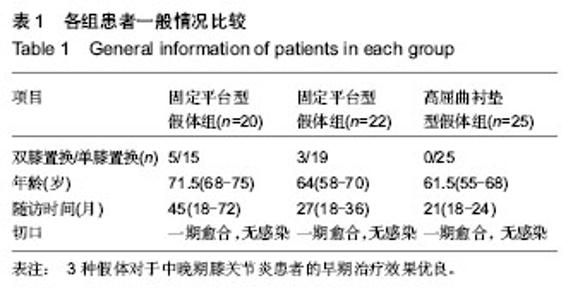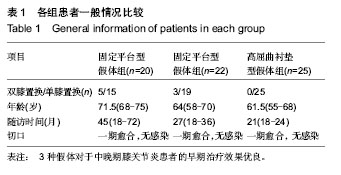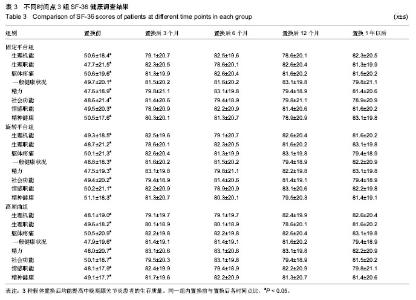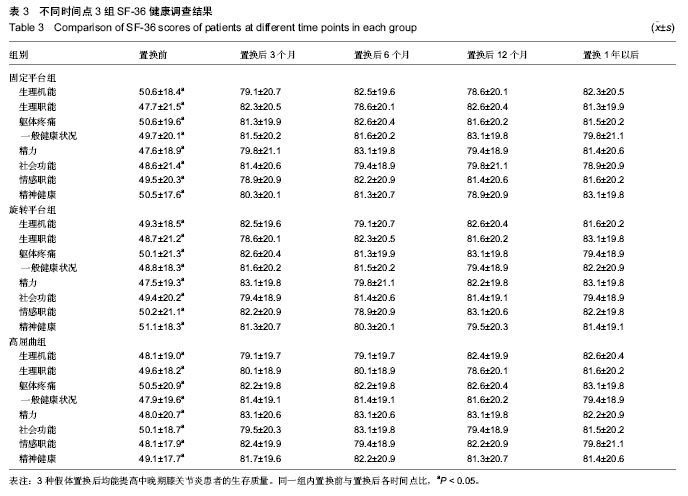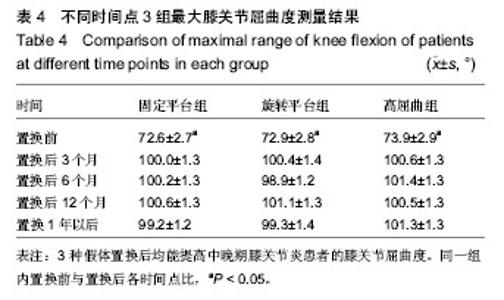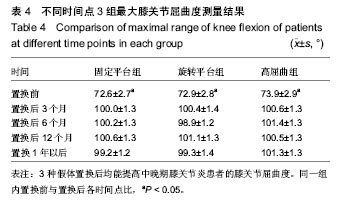| [1] Brazier JE, Harper R, Jones NM, et al.Validating the SF-36 health survey questionnaire: new outcome measure for primary care.BMJ. 1992;305(6846):160-164.
[2] Insall JN, Dorr LD, Scott RD,et al.Rationale of the Knee Society clinical rating system.Clin Orthop Relat Res. 1989; (248):13-14.
[3] Kim YH, Oh JH, Oh SH.Osteolysis around cementless porous-coated anatomic knee prostheses.J Bone Joint Surg Br. 1995;77(2):236-241.
[4] D'Lima DD, Trice M, Urquhart AG,et al.Tibiofemoral conformity and kinematics of rotating-bearing knee prostheses.Clin Orthop Relat Res. 2001;(386):235-242.
[5] Stiehl JB, Komistek RD, Dennis DA,et al.Kinematics of the patellofemoral joint in total knee arthroplasty.J Arthroplasty. 2001;16(6):706-714.
[6] Yang CC, McFadden LA, Dennis DA, et al.Lateral retinacular release rates in mobile- versus fixed-bearing TKA.Clin Orthop Relat Res. 2008;466(11):2656-2661.
[7] Kim YH, Kim JS.Comparison of anterior-posterior-glide and rotating-platform low contact stress mobile-bearing total knee arthroplasties.J Bone Joint Surg Am. 2004;86-A(6): 1239- 1247.
[8] Seon JK, Park SJ, Lee KB,et al.Range of motion in total knee arthroplasty: a prospective comparison of high-flexion and standard cruciate-retaining designs.J Bone Joint Surg Am. 2009;91(3):672-679.
[9] Garling EH, Kaptein BL, Nelissen RG, et al.Limited rotation of the mobile-bearing in a rotating platform total knee prosthesis. J Biomech. 2007;40 Suppl 1:S25-30.
[10] Ramappa M, Port A.Unique relationship between osteophyte and femoral-tibia component size mismatch in determining polyethylene wear in primary total knee arthroplasty: a case report.J Med Case Rep. 2009;3:59. |
